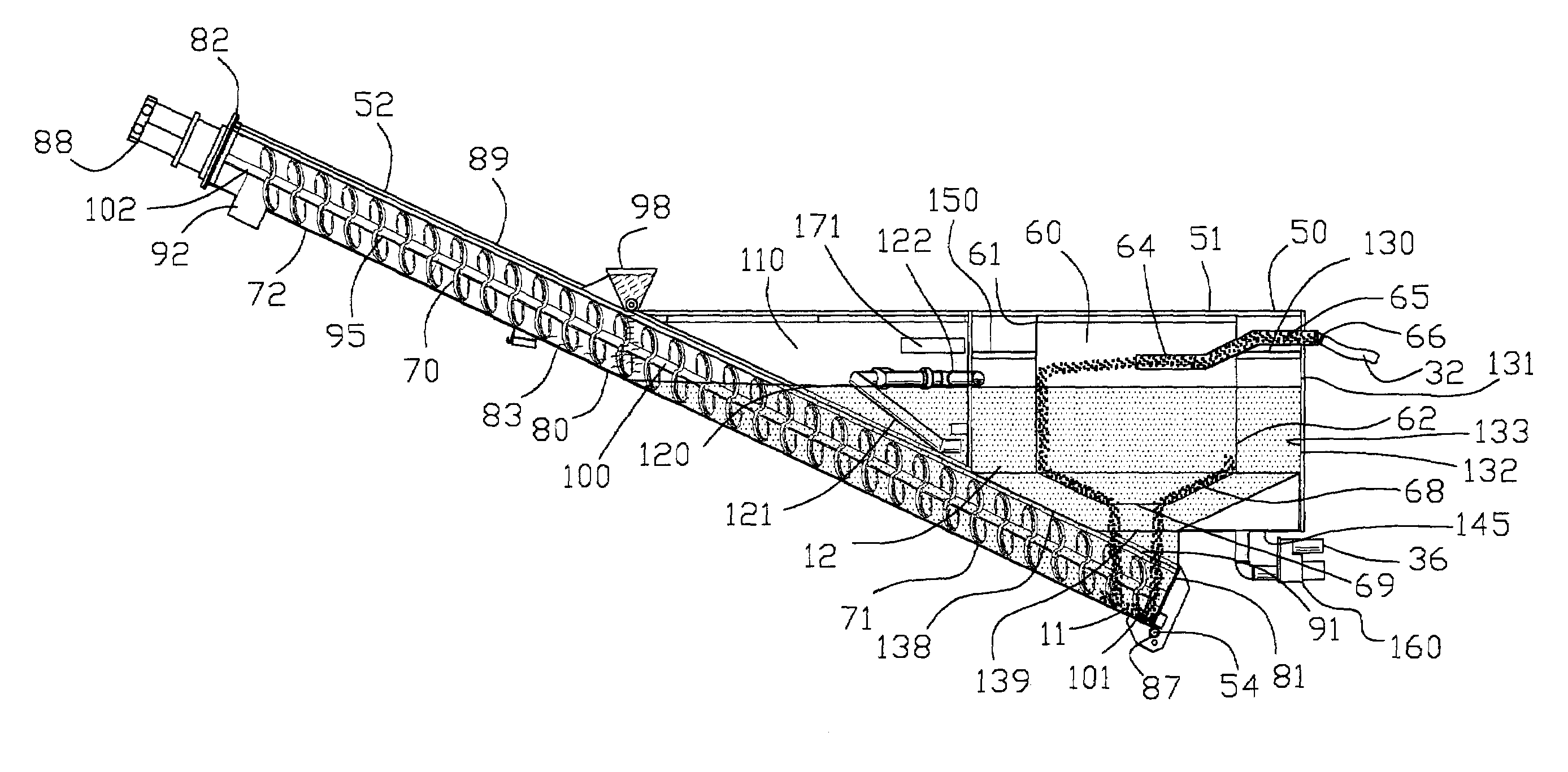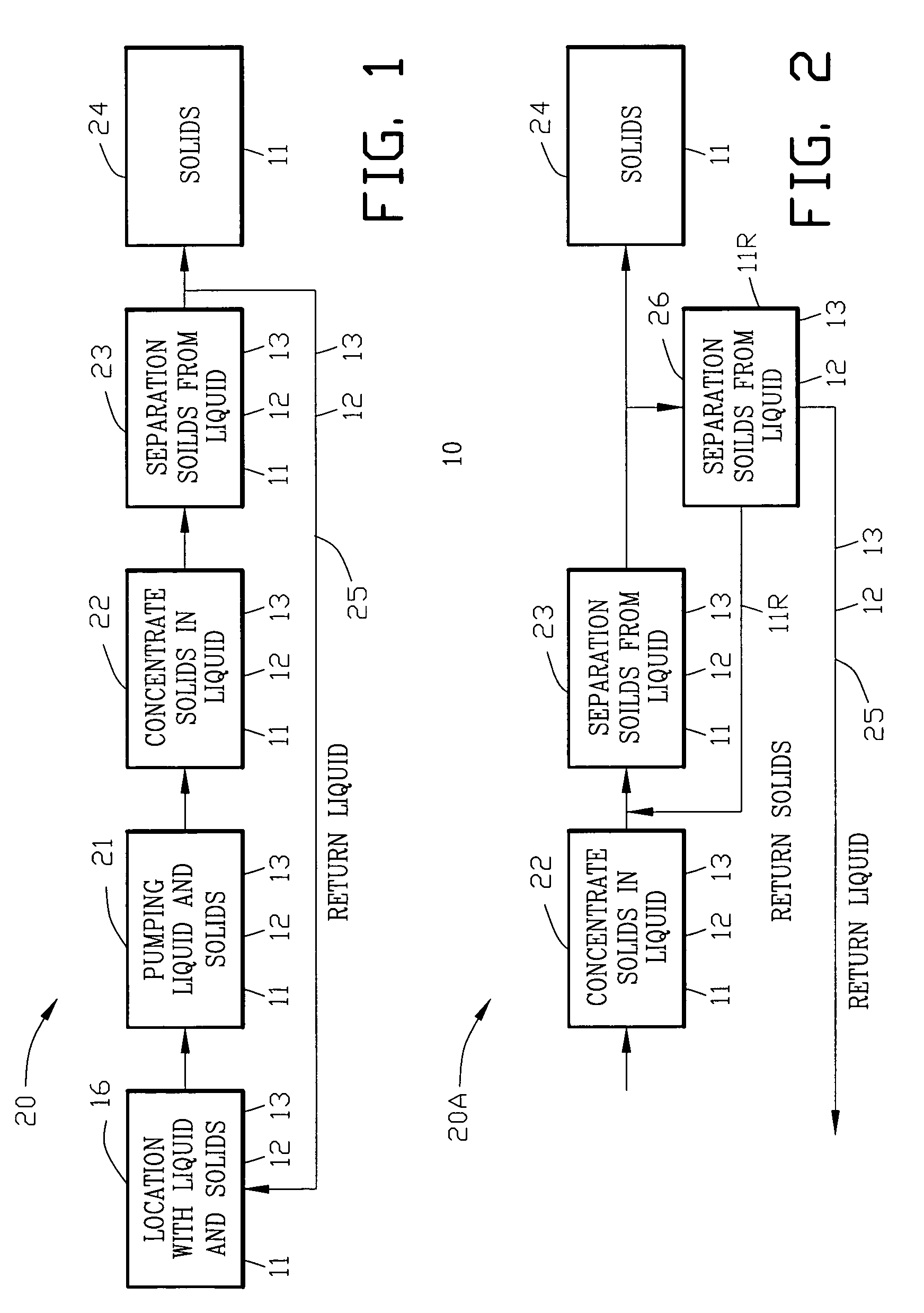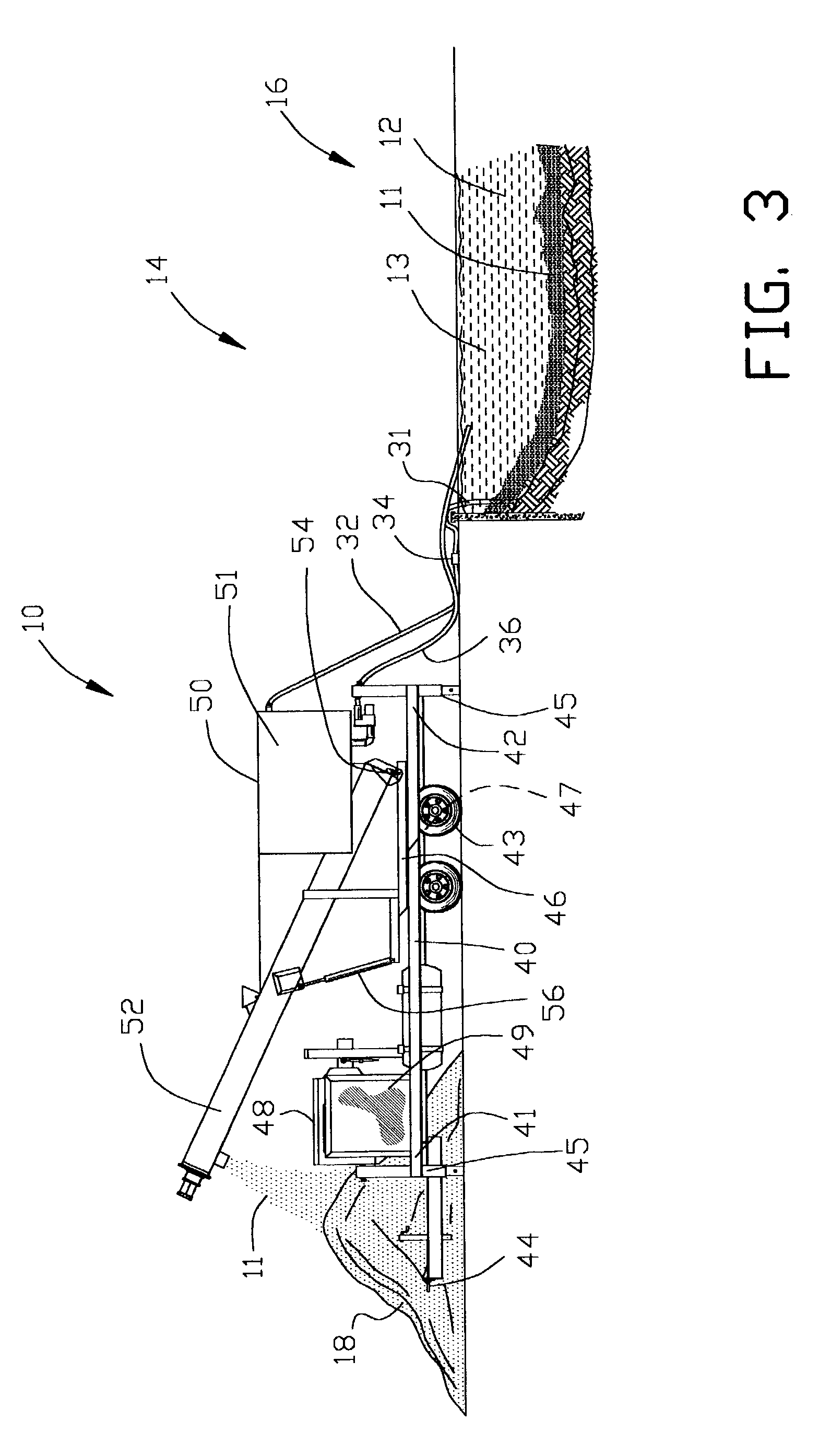Apparatus for separating solids from a liquid
- Summary
- Abstract
- Description
- Claims
- Application Information
AI Technical Summary
Benefits of technology
Problems solved by technology
Method used
Image
Examples
Embodiment Construction
[0051]FIG. 1 is a block diagram of a first embodiment of a method 20 of separating solids 11 from a liquid 12. The method 20 comprises the step 21 of pumping the solids 11 and liquid 12 from a location 16. A biologically active material 13 may be suspended within the liquid 12. The solids 11 within the liquid 12 are concentrated within the liquid in the process step 22. The concentrated solids 11 are separated from the liquid 12 in the process step 23. The concentrated solids 11 are separated from the liquid 12 with an angularly orientated separator for discharging conveying concentrated solids 11 in the process step 24. The method 20 comprises the step 25 of removing the liquid 12 from the separator process. Preferably, the liquid 12 is returned to the location 16.
[0052]FIG. 2 is a partial block diagram of a second embodiment of a method 20A of separating solids 11 from a liquid 12. The second embodiment of a method 20A is similar to the method 20 shown in FIG. 1 with the addition ...
PUM
| Property | Measurement | Unit |
|---|---|---|
| Level | aaaaa | aaaaa |
Abstract
Description
Claims
Application Information
 Login to View More
Login to View More - R&D
- Intellectual Property
- Life Sciences
- Materials
- Tech Scout
- Unparalleled Data Quality
- Higher Quality Content
- 60% Fewer Hallucinations
Browse by: Latest US Patents, China's latest patents, Technical Efficacy Thesaurus, Application Domain, Technology Topic, Popular Technical Reports.
© 2025 PatSnap. All rights reserved.Legal|Privacy policy|Modern Slavery Act Transparency Statement|Sitemap|About US| Contact US: help@patsnap.com



